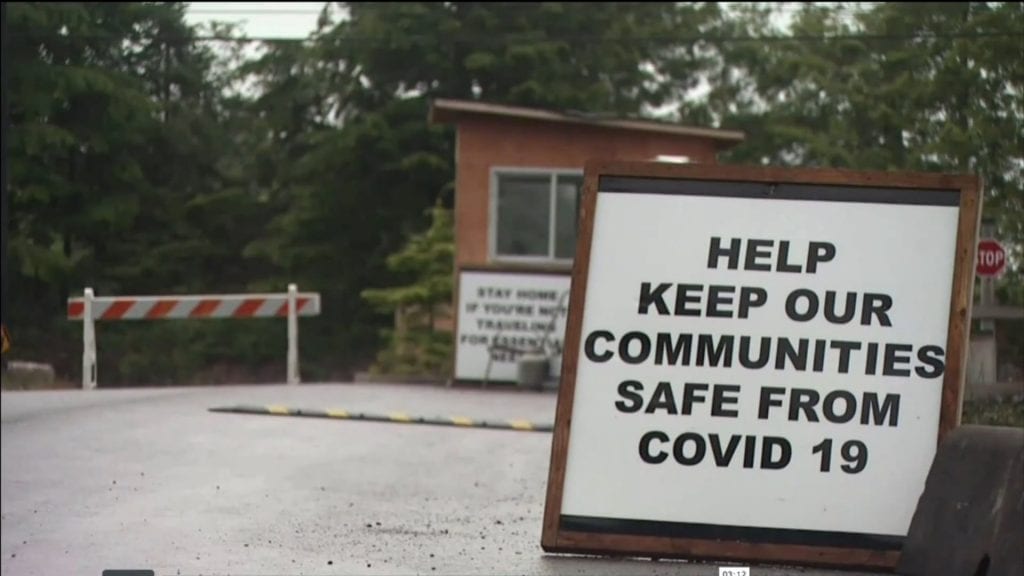
Sign warns visitors to a First Nation in B.C. APTN News file photo
A First Nation that sits on the border between northwestern Ontario and Manitoba will impose a lockdown starting Friday as COVID-19 cases climb in the region.
Iskatewizaagegan 39 – also known as Shoal Lake 39 – announced the coming measures late Wednesday, advising people to stock up on prescriptions and groceries ahead of the lockdown that will see offices and the local school closed.
The measure from the chief and council comes after two people in nearby Shoal Lake 40 recently tested positive for COVID-19.
Shoal Lake 39 Chief Gerald Lewis said residents in the community of about 400 people are worried, but they understand the seriousness of the situation.
“We keep our fingers crossed. That’s all we can do,” Lewis said by phone on Thursday. He said the lockdown will be reassessed after seven days, but is likely to continue given the high rates of infection nearby.
The First Nation is located near Winnipeg and Steinbach, Man., two cities where COVID-19 infections have skyrocketed recently. The two Shoal Lake 40 residents are believed to have contracted the illness in Winnipeg, Lewis said.
There’s also concern about the growing number of cases in the Kenora, Ont., region, where the nearest hospitals are located. The Northwestern Health Unit’s top doctor warned the public this week about increasing infection risk in the area.
Dr. Kit Young Hoon urged residents to take precautions by avoiding unnecessary travel and not socializing with other households indoors. Hoon said she’s concerned that the public health unit will have to move out of the green zone, the lowest possible restrictions in Ontario’s reopening framework.
“I think we’re inching toward the yellow level,” said Hoon, who noted the increased cases are just in Kenora, not the public health unit’s total catchment area.
“I’m hopeful that we do not move to the yellow level (…) which is why we’re encouraging everyone to be more careful, to be more vigilant.”
The region’s positivity rate for COVID-19 is now six times higher than it was in the summer, according to local health unit, noting that the positivity rate is now similar to some areas in southern Ontario that are battling an increasingly deadly second wave of the pandemic.
In the past 17 days, the health unit said 10 positive cases have been reported in the Kenora region, which is close to Manitoba.
“There’s a fair bit of travel in both directions between Winnipeg and the more western side of our catchment area,” said Hoon. “So it is concerning that Manitoba has such high rates, particularly Winnipeg, so we wanted to highlight that to the population that they should be avoiding non-essential travel in general, but in particular non-essential travel to Manitoba.”
Three people have been hospitalized in Kenora with symptoms since the beginning of November.
One of those people is a Shoal Lake 40 resident who was recently airlifted to a hospital, Lewis said. The individual is well-known in both neighbouring communities.
The health unit covers about one-fifth of the province’s land mass and includes 19 municipalities and 39 First Nation communities.
With files from John Chidley-Hill









